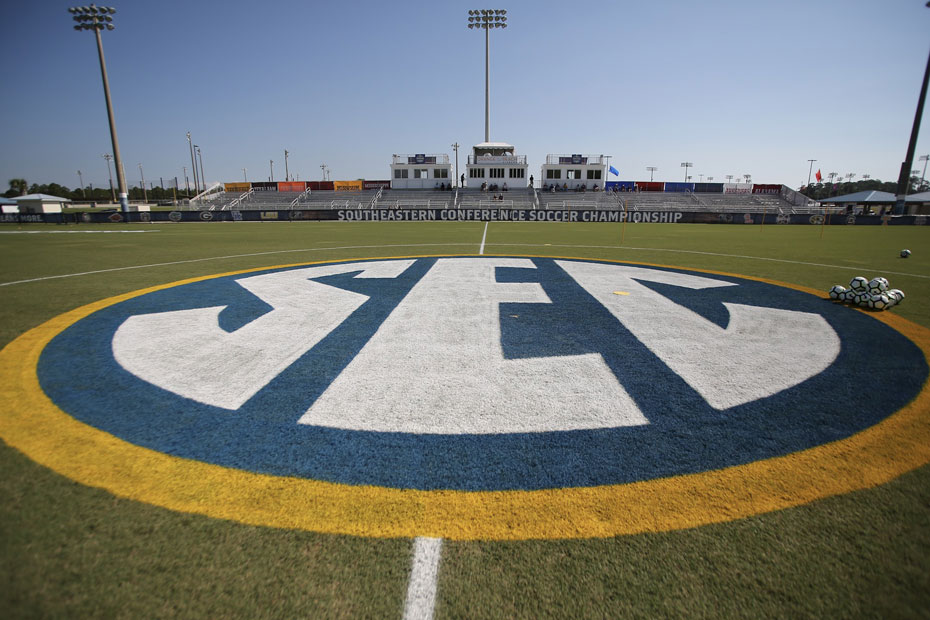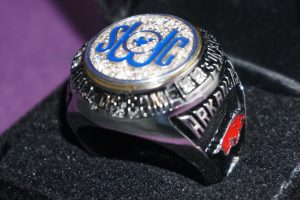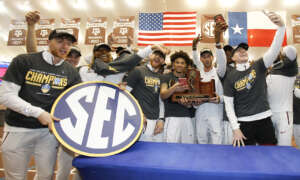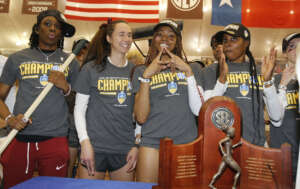

Breaking Up was Right Thing to Do
Breaking up is difficult. When you have been involved in a long-term relationship, there is rarely a perfect way to part ways amicably. After all, when you both have invested the time, the commitment and shared deep admiration, you have invariably been through ups and downs and created countless memories along the way.
Yet somehow, there comes a time when things just do not seem to be the same as they once were. Little things turn into bigger things. Lingering unresolved issues chip away at the trust. The relationship appears to be deeply rooted in the past with little hope for a bountiful future. Inevitably some familiar words emerge – “It has been a good run, but we’ve grown apart. I think it is best we go our separate ways.”
For the University of Arkansas and the Southwest Conference, that pivotal moment came in the summer of 1990. After more than 75 years together, the University of Arkansas was feeling the strain. As the only non-Texas outpost in the ultra-competitive league, Arkansas had always been an outsider. Despite holding its own on the field and on the court, the Razorbacks were always lumped in with schools that shared a common trait – primarily not being the University of Texas. The disparity was not just in respect or influence, the financial ledgers were far from balanced as well.
Add to that a series of conference school run-ins with the NCAA and the Southwest Conference was quickly becoming known for its transgressions rather than its accomplishments. In the late 1980s it was becoming clear the walls of the Southwest Conference were crumbling and Coach Frank Broyles quietly worked to find the Razorbacks a new home.
Geographically, the Big 8 Conference seemed like a logical place to look. However, the nearby league was anything but a sure bet, even if it decided to expand in the coming years. If Arkansas decided to run out the clock with the Southwest Conference, it would have likely been left behind by some all too familiar deep rooted Texas politics that would have valued others, beyond Texas and Texas A&M, getting an invitation to the expanded league before the Hogs.
Instead, Broyles worked behind the scenes to position the University of Arkansas to be a forerunner, not an afterthought in the discussion. Soon, other pieces of the puzzle began to fall into place and Arkansas emerged as a perfect fit for the impending jigsaw of conference alignment.
When the Southeastern Conference and its new Commissioner Roy Kramer, who had been hired in January 1990, announced it would be looking to expand a more complete image began to take shape. Following the annual SEC Meetings in late May, the league announced it would expand from its current makeup of 10 schools. SEC Presidents and Chancellors determined the league would not issue invitations, rather just let their intentions be known.
There was no need for even a save the date card from the SEC as far as Arkansas was concerned. The announcement combined with the Razorbacks’ growing trepidation about the future in the Southwest Conference made the timing right for a change.
The SEC and the Razorbacks seemed like a perfect match. Arkansas was a successful all-sports program that could bring a passionate fan base and help expand the league’s footprint. On the other side, the SEC offered an opportunity for Arkansas to expand its recruiting base nationally and benefit from a revenue sharing model that helped buoy all schools equally, rather than just a select few based on historical positioning and football success.
Even with all the promise of the SEC, there were still pangs of inner conflict within the Razorback Nation. The Southwest Conference had been the backdrop for so many great players, memorable moments and legendary Razorbacks. Razorback fans lived for the SWC Men’s Basketball Tournament in Dallas, an invasion that turned Reunion Arena into Barnhill South. The Southwest Conference had been good for Arkansas and vice versa. But now the longings for the traditions of the past were overtaken by the hopes for the future.
After a whirlwind two-month summer romance, the Razorbacks found a new conference home while simultaneously tipping a lead domino in what would be a chain reaction of intercollegiate athletics realignment. On August 1, 1990 at the University of Arkansas Law School, Roy Kramer officially invited the Razorbacks to join the SEC. The University of Arkansas Board of Trustees quickly accepted the invite and a jubilant Arkansas Chancellor Dan Ferritor sealed the deal by plopping a Hog Hat on the top of Kramer’s head without warning. A stunned Kramer smiled and relished the moment. The photo spread around the world and served notice that Arkansas was SEC bound.
Although the deal was done, Arkansas still had more than a full year to compete in the Southwest Conference. After all, Arkansas would not join the SEC in most sports until 1991-92 and not in football until the 1992 season. The ripple effects were felt immediately. Arkansas went from being an outsider to an outcast among its SWC brethren. It was awkward at best.
Understandably, many in the SWC resented Arkansas’ move, not so much due to an enduring adoration for the Hogs, but more so for the ominous tone it set. The good old days of the Southwest Conference appeared to be coming to an end. Arkansas helped confirm that notion.
In the Razorbacks’ contemptuous swan song in the SWC, Arkansas fans jubilantly chanted S-E-C, S-E-C to bid adieu to its former rivals. It was a cheer that would ultimately outlast the SWC and help define a golden era for Arkansas’ new conference home.
Now, more than 30 years after Arkansas said “I do” to the SEC, the marriage seems to have worked exceedingly well for both parties. Sure, the Razorbacks have struggled to find a conference rivalry that matches the fervor of the Hogs-Horns. At times, Arkansas has struggled to break through the stranglehold of SEC dominance in football and in a handful of other sports.
Make no mistake, Arkansas has had success in the SEC even from the beginning. The Razorbacks practically dominated from the beginning in men’s and women’s cross country and track and field. Coach Nolan Richardson’s men’s basketball team served notice quickly to the Big Blue Nation that there was a new college basketball power to be reckoned with. The first SEC team other than Alabama and Florida to earn a spot in the SEC Football Championship Game? You guessed it, the Arkansas Razorbacks.
Since 1992, the Razorbacks have won 140 SEC Championships and has helped raise the SEC to new national heights in a variety of sports. Arkansas did not just enter the league, it announced its presence.
Conversely, there is no mistaking the transformational impact the SEC has had on the University of Arkansas. An explosion in facilities, an expanding recruiting footprint and the generation of vital revenue to grow the support of more than 465 Razorback student-athletes in 19 sports.
On an academic side, the University of Arkansas has partnered with fellow SEC schools to make advancements in various fields and engaged in collaboration not previously spawned by a SWC affiliation. Enrollment at Arkansas has blossomed to more than 28,000, helping expand the institution’s influence and reputation around the nation.
As we celebrate the 30th anniversary of that historic day when Arkansas officially joined hands with the SEC, it offers all of us in the Razorback Nation an opportunity for reflection. Our collective identity as a program is defined by the deep roots of our past in the SWC as well as the abundant growth fostered by the fertile ground of the SEC.
It has not always been easy. Yet, a bold move made three decades ago continues to offer expanding opportunities for newfound success and exponential possibilities.
Breaking up is difficult. But for the University of Arkansas, it was the right thing to do.
Razorback Road is a column written by Senior Associate Athletic Director for Public Relations and Former Student-Athlete Engagement Kevin Trainor (@KTHogs). Trainor is a graduate of the University of Arkansas and has worked for Razorback Athletics for more than 25 years.





